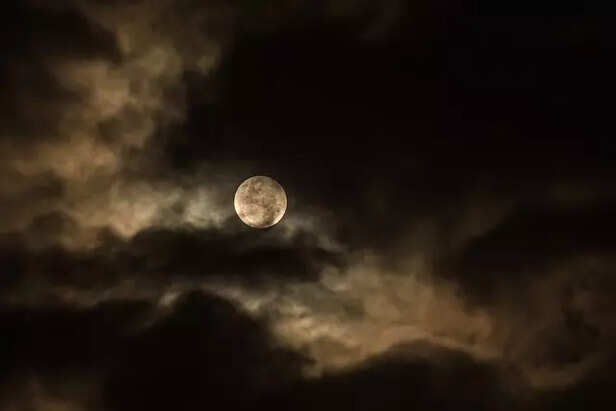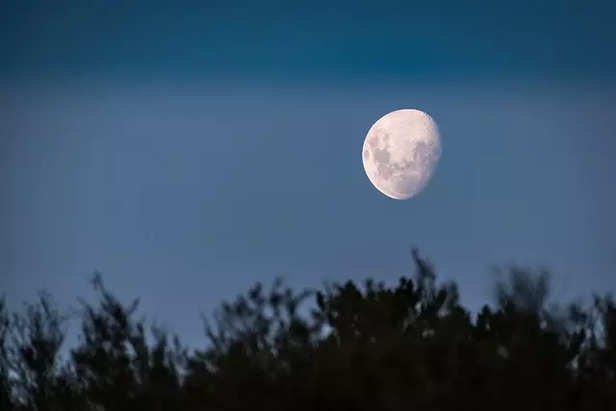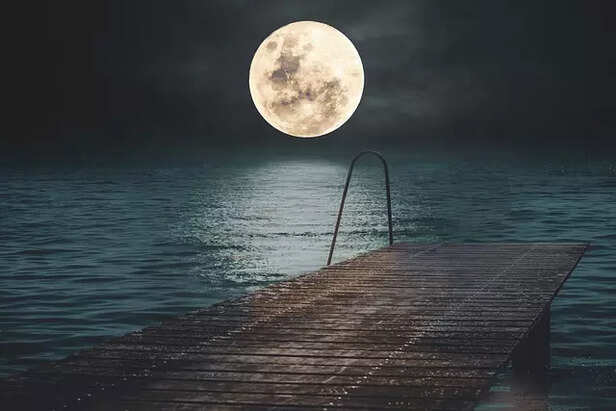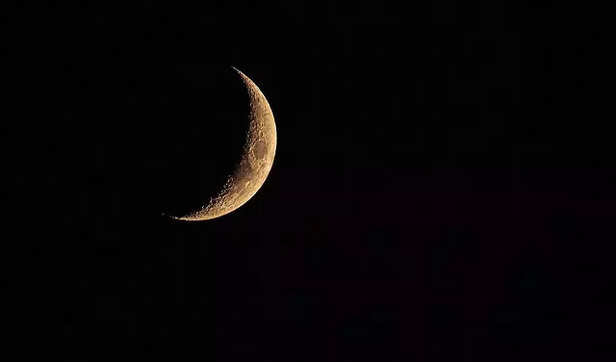The Moon’s Hidden Powers: Why Hindu and Muslim Rituals Depend on It!
Tarun Badghaiya | Feb 14, 2025, 00:15 IST
moon
Moon holds a lot of values in Hinduism and Islam, which in turn influence the religious rituals, calendars, and mythology, respectively. In relation to Hinduism, the Chandra (Moon God) decides the seasons, emotions, and holidays such as Purnima, Amavasya, and Karva Chauth. On the other side of the coin in Islam, the Hilal Khalil calendar, which determines the most important observances as Ramadan, Eid, and Hajj, while the moon is appearing in the sky, is known as when a special event occurs, moon sightings identify what the holy event is. These two traditions both take it as a symbol of God's power, guide, and the order of the cosmos. From the crescent moon of Shiva to the moon-splitting miracle of Prophet Muhammad, this space entity has made itself live in the faith of people, thus impacting such spiritual moments, timekeeping, and astrological beliefs in diverse cultures.
For annual sky observations and calendars, the moon is a changeable resource that has captivated humankind for long centuries now. In Islam and Hinduism, the moon has a core impact in defining festivals, spirituality, mythology, and even calendars. The moon’s role in such particular faiths is not just metaphorical; it governs the worship, fasting, and astrological activities for the believers in question.
In the scriptures of Hinduism, for example, Chandra Deva rules over the moon, and along with this, the moon is also feared and revered in Islam as it denotes the start of Ramadan and Eid. But why do those two important religions in the world regard that celestial body with such power? Let’s investigate the nexus of the moon and the rituals in the two contexts of Buddhism and Hinduism.

As a religion, Hinduism portrays the moon as Chandra or even as Soma, a great deity associated with wisdom, feelings, and time. Chandra in Hindu myth is depicted as a handsome man riding a chariot drawn by ten white horses. Chandra is also associated with nectar, coolness, and mental tranquillity, often thought of as the cooler counterpart to the fiery sun, Surya.
Chandra is perhaps best known for his curse made by King Daksha. According to the myth, Chandra married Daksha's 27 daughters, who represent the 27 Nakshatras (Lunar Constellations). However, he seemed to particularly love one of them, Rohini, more than the rest. Commander Daksha was infuriated and cursed him to lose his light and power. This curse, symbolised through life, moon waxing and waning, represents death and birth: life's constant changes. Later, Lord Shiva intervened and lifted the curse, partially allowing the moon to possess his strength sometimes, representing the phases of the moon.

Hinduism is one of the religions that follows a lunar calendar that is known as Panchang. Most of the festivals and rituals are celebrated based on the moon's position. Some of the key lunar-based observances are:
1. Purnima (full moon) & Amavasya (new moon): Purnima is considered a very important day for spiritual activities, fasting, and performing acts of kindness. Some important festivals celebrated on this day include Guru Purnima, Buddha Purnima, and Holi.
2. Amavasya Purnima is considered the day for Tarapan (offering to ancestors). It is also one of the fasting rituals and is associated with ancestral worship (Pitru Paksha) along with self-contemplation.
3. Hindu women observe many fasting rituals like Karva Chauth, where a woman is expected to fast from sunrise to moon sighting for the well-being of her husband. The fast is broken after the first glimpse of the moon.
4. Spirituality is also emphasised during other lunar events like Ekadashi, Shivratri, and Chaturthi, which are set dates in the calendar.
5. Maha Shivratri: Following this, there is a festival where moon worshippers celebrate the 14th night of the waning moon as Maha Shivratri—a festival to salute Shive follower Shankara, who wears the crescent moon as the symbol of a superior being who governs emotions and time.
With certain Indian traditions, specifically Vedic astrology (Jyotish) views, the moon dictates the mental and emotional realms of a being. The Moon’s placement in a person’s chart plays an important role in their wellbeing, mental capacity, creativity, and general health. Chandra Dosha (lunar affliction) may cause one’s emotional condition to be unstable, and the suggested remedies for this dosha imbalance include chanting the Om Somaya Namah phrase and donning pearls.
Islam has a calendar completely dependent on the moon phases, which is also widely known as the Hijri Calendar. This is to say that the months either have 29 or 30 days in them based on the waxing or waning of the moon (Hilal). Clearly, the Islamic calendar is not the same as the Gregorian calendar, which is based on the sun. In this situation, the Islamic months usually change in length; thus, the time of the different religious practices varies, increasing the period of the calendar every year.
1. Ramadan: The first sighting begins the beginning of Ramadan. During this time, Muslims are to fast from dawn till sunset, and the movement of the moon acts as a guide to them in this regard.
2. Eid-ul-Fitr & Eid-ul-Adha: Religion processions are performed after the Shawwal new moon is identified, whereas just after the Dhul-Hijjah moon is seen.
3. Hajj: Performing the pilgrimage to Mecca takes place in the Dhul-Hijjah, 12th month of the Islamic calendar, and the biggest of the rituals fall on patterns such as lunar dates.

The moon is considered to spiritually symbolise Islam as well as being a symbolic representation of it. In the Quran, the moon is noted very often as a clear sign of God’s power and existence:
1. Surah Al-Qamar (54:1): "The Bud of the Hour is near and the Moon is split asunder." This verse is related to the miracle of Prophet Muhammad, who, as per Islamic belief, split the moon to show his magesterium. This verse is concerned with the miracle of the Prophet Muhammad, who, according to the Islamic tradition, split the moon in half to prove his prophethood.
2. Surah Yasin (36:39): “Moreover, also the moon, when it wanes, We have made it pass through different phases till, like an old date-stalk, it returns. The wording of this verse. Linked with Allah because he mentions how he rotates the moon on its axis so people get light in the night.
Moreover, also the moon; in fact, when wax never disappears away, we have measured it in phases until it returns like an old date stalk. No sooner should this section be over the other or sooner shall we be released.
3. The crescent moon (Hilal) is also a symbol of renewal and divine guidance, which is a very widely used symbol in Islamic art and architecture.

3.
Lailat-ul-Qadr (Night of Power): Muslims believe that this sacred night occurred in the last 10 days of Ramadan when God's words were given to the world that which was embodied in the Quran. It is the period of the full moon or the first moon phase of the lunar cycle, which adds to its spiritual power.
This sacred night, which occurs in the last 10 days of Ramadan, is believed to be when the Quran was revealed. It is observed on a full moon or near-full moon night, adding to its spiritual power.
Moon Sighting Controversy: The Arabic month is totally based on the moon's appearance, and if people in different places see the moon, then they observe the month. Thus conflicts of the days of the Sacred Feast have arisen. When a part of the community is searching for a physical sign, a different one is occupied calculating the day.
Throughout the Muslim world, the beginning of the Islamic month is still a matter of dispute, as people in different parts of the world follow different moon sightings. Conflict between communities is the result. Some of them look for the real sighting, while others depend on astronomical calculations.
Their differences notwithstanding, the lunar is central to the beliefs of Hindus and Muslims:
AspectHinduismIslamCalendar TypeLunar-Solar (Panchang)Purely Lunar (Hijri)Major Festivals Purnima, Amavasya, Karva Chauth-Ramadan, Eid, HajjAstrologyMoon controls feelings (Chandra)Moon is for time that is used for passing (Hilal)SymbolismMental Being, wisdom, coming back to life Light, guidance, divine power Mythology.
The moon has always played a significant role in religious practices, and people continue to believe it to be a symbol of divine guidance, time, and the eternal cycle of life. Regardless of how much development Hindu mythological stories of Chandra or Islamic moon sighting rituals create, the moon is still an unflinching spiritual force.
The power of the moon is absolutely not something that only resides in the sky—it also exists in the hearts and minds of millions and influences their faith, their fate, and their devotion.
What you see when you look at the moon is not just a celestial body; rather, it's one of the links between the heavens and the human soul.
In the scriptures of Hinduism, for example, Chandra Deva rules over the moon, and along with this, the moon is also feared and revered in Islam as it denotes the start of Ramadan and Eid. But why do those two important religions in the world regard that celestial body with such power? Let’s investigate the nexus of the moon and the rituals in the two contexts of Buddhism and Hinduism.

cloudy
A. The Moon in Hinduism: Myths, Festivals, and Astrology
1. Chandra, the moon god in Hinduism
As a religion, Hinduism portrays the moon as Chandra or even as Soma, a great deity associated with wisdom, feelings, and time. Chandra in Hindu myth is depicted as a handsome man riding a chariot drawn by ten white horses. Chandra is also associated with nectar, coolness, and mental tranquillity, often thought of as the cooler counterpart to the fiery sun, Surya.
Chandra is perhaps best known for his curse made by King Daksha. According to the myth, Chandra married Daksha's 27 daughters, who represent the 27 Nakshatras (Lunar Constellations). However, he seemed to particularly love one of them, Rohini, more than the rest. Commander Daksha was infuriated and cursed him to lose his light and power. This curse, symbolised through life, moon waxing and waning, represents death and birth: life's constant changes. Later, Lord Shiva intervened and lifted the curse, partially allowing the moon to possess his strength sometimes, representing the phases of the moon.

moon
2. The Lunar Calendar and Festivals of Religion
Hinduism is one of the religions that follows a lunar calendar that is known as Panchang. Most of the festivals and rituals are celebrated based on the moon's position. Some of the key lunar-based observances are:
1. Purnima (full moon) & Amavasya (new moon): Purnima is considered a very important day for spiritual activities, fasting, and performing acts of kindness. Some important festivals celebrated on this day include Guru Purnima, Buddha Purnima, and Holi.
2. Amavasya Purnima is considered the day for Tarapan (offering to ancestors). It is also one of the fasting rituals and is associated with ancestral worship (Pitru Paksha) along with self-contemplation.
3. Hindu women observe many fasting rituals like Karva Chauth, where a woman is expected to fast from sunrise to moon sighting for the well-being of her husband. The fast is broken after the first glimpse of the moon.
4. Spirituality is also emphasised during other lunar events like Ekadashi, Shivratri, and Chaturthi, which are set dates in the calendar.
5. Maha Shivratri: Following this, there is a festival where moon worshippers celebrate the 14th night of the waning moon as Maha Shivratri—a festival to salute Shive follower Shankara, who wears the crescent moon as the symbol of a superior being who governs emotions and time.
3. The Moon’s Influence in Hindu Astrology
With certain Indian traditions, specifically Vedic astrology (Jyotish) views, the moon dictates the mental and emotional realms of a being. The Moon’s placement in a person’s chart plays an important role in their wellbeing, mental capacity, creativity, and general health. Chandra Dosha (lunar affliction) may cause one’s emotional condition to be unstable, and the suggested remedies for this dosha imbalance include chanting the Om Somaya Namah phrase and donning pearls.
The Moon in Islam: Calendar, Rituals, and Symbolism
1. The Islamic Lunar Calendar & Moon Sightings
Islam has a calendar completely dependent on the moon phases, which is also widely known as the Hijri Calendar. This is to say that the months either have 29 or 30 days in them based on the waxing or waning of the moon (Hilal). Clearly, the Islamic calendar is not the same as the Gregorian calendar, which is based on the sun. In this situation, the Islamic months usually change in length; thus, the time of the different religious practices varies, increasing the period of the calendar every year.
1. Ramadan: The first sighting begins the beginning of Ramadan. During this time, Muslims are to fast from dawn till sunset, and the movement of the moon acts as a guide to them in this regard.
2. Eid-ul-Fitr & Eid-ul-Adha: Religion processions are performed after the Shawwal new moon is identified, whereas just after the Dhul-Hijjah moon is seen.
3. Hajj: Performing the pilgrimage to Mecca takes place in the Dhul-Hijjah, 12th month of the Islamic calendar, and the biggest of the rituals fall on patterns such as lunar dates.

landscape
2. The Moon in the Quran and Prophetic Teachings
The moon is considered to spiritually symbolise Islam as well as being a symbolic representation of it. In the Quran, the moon is noted very often as a clear sign of God’s power and existence:
1. Surah Al-Qamar (54:1): "The Bud of the Hour is near and the Moon is split asunder." This verse is related to the miracle of Prophet Muhammad, who, as per Islamic belief, split the moon to show his magesterium. This verse is concerned with the miracle of the Prophet Muhammad, who, according to the Islamic tradition, split the moon in half to prove his prophethood.
2. Surah Yasin (36:39): “Moreover, also the moon, when it wanes, We have made it pass through different phases till, like an old date-stalk, it returns. The wording of this verse. Linked with Allah because he mentions how he rotates the moon on its axis so people get light in the night.
Moreover, also the moon; in fact, when wax never disappears away, we have measured it in phases until it returns like an old date stalk. No sooner should this section be over the other or sooner shall we be released.
3. The crescent moon (Hilal) is also a symbol of renewal and divine guidance, which is a very widely used symbol in Islamic art and architecture.

moon
3. Moon Rituals & Their Spiritual Significance
Lailat-ul-Qadr (Night of Power): Muslims believe that this sacred night occurred in the last 10 days of Ramadan when God's words were given to the world that which was embodied in the Quran. It is the period of the full moon or the first moon phase of the lunar cycle, which adds to its spiritual power.
This sacred night, which occurs in the last 10 days of Ramadan, is believed to be when the Quran was revealed. It is observed on a full moon or near-full moon night, adding to its spiritual power.
Moon Sighting Controversy: The Arabic month is totally based on the moon's appearance, and if people in different places see the moon, then they observe the month. Thus conflicts of the days of the Sacred Feast have arisen. When a part of the community is searching for a physical sign, a different one is occupied calculating the day.
Throughout the Muslim world, the beginning of the Islamic month is still a matter of dispute, as people in different parts of the world follow different moon sightings. Conflict between communities is the result. Some of them look for the real sighting, while others depend on astronomical calculations.
B. Hinduism vs. Islam: Common Themes of Lunar Influence
Their differences notwithstanding, the lunar is central to the beliefs of Hindus and Muslims:
AspectHinduismIslamCalendar TypeLunar-Solar (Panchang)Purely Lunar (Hijri)Major Festivals Purnima, Amavasya, Karva Chauth-Ramadan, Eid, HajjAstrologyMoon controls feelings (Chandra)Moon is for time that is used for passing (Hilal)SymbolismMental Being, wisdom, coming back to life Light, guidance, divine power Mythology.
The moon has always played a significant role in religious practices, and people continue to believe it to be a symbol of divine guidance, time, and the eternal cycle of life. Regardless of how much development Hindu mythological stories of Chandra or Islamic moon sighting rituals create, the moon is still an unflinching spiritual force.
The power of the moon is absolutely not something that only resides in the sky—it also exists in the hearts and minds of millions and influences their faith, their fate, and their devotion.
What you see when you look at the moon is not just a celestial body; rather, it's one of the links between the heavens and the human soul.
